Have you ever wondered why roses and honeysuckle are celebrated as the birth flowers of June? Beyond their captivating beauty and distinctive scents, these blooms carry rich meanings tied to love, happiness, and purity. For those born in this warm, vibrant month, they evoke passionate emotions and sweet nostalgia.
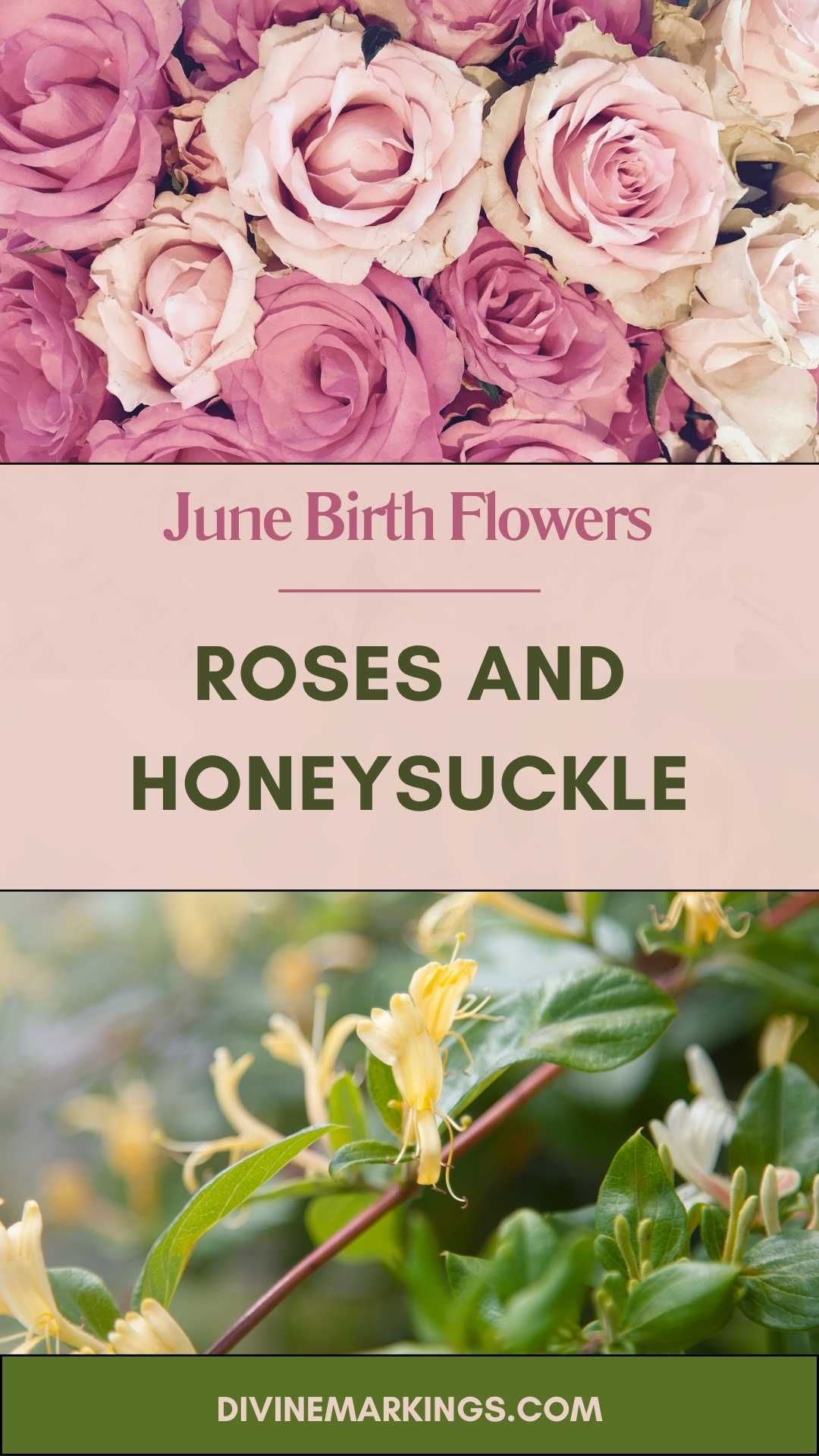
Imagine the lush, velvety petals of a rose, often symbolizing love and admiration. In contrast, the honeysuckle’s delicate, tubular flowers fill the air with a sweet fragrance, embodying the sweetness of life. Together, they paint a picture of beauty that has been cherished through countless poems and songs.
As you explore the meanings behind these stunning blooms, you’ll find that each color of rose also adds another layer to its symbolism—red for love, white for purity, and yellow for friendship. Meanwhile, the honeysuckle represents unwavering affection and the joy that comes with it. Dive into this garden of wonder and discover how each flower tells its own enchanting story.
The Significance of June Birth Flowers
June is a lovely month with warm weather and vibrant blooming flowers. If you were born this month, your birth flowers are the rose and honeysuckle. These flowers carry wonderful meanings, connecting deeply with love, honor, sweetness, and devotion.
Roses: A Symbol of Love and Honor
Did you know roses are often associated with love and beauty? These classic flowers have been symbols for centuries, used in romance, art, and more.
Roses come in a wide array of colors, each with its own meaning. Red roses often represent passionate love, while white can symbolize purity and humility. You might also find yellow roses standing for friendship and joy.
With origins in Asia and Europe, roses have played an important role in many cultures. They often appear in stories and traditions to express deep feelings. People celebrate and honor loved ones with roses, making them perfect for special occasions like anniversaries and weddings. So when you think of roses, think of the rich history tied to love and honor.
Honeysuckle: Sweetness and Devotion
Honeysuckle flowers bring the essence of sweetness and devotion. With their beautiful, fragrant blooms, honeysuckles are favorites in gardens. They herald the entrance into summer with their bright colors ranging from white and yellow to pink and red.
The honeysuckle is known for attracting not just humans, but also fascinating creatures like butterflies and hummingbirds. Its nectar, which is sweet and aromatic, symbolizes the sweetness of happy memories and enduring bonds. In ancient folklore, giving honeysuckle to someone meant showing deep affection and loyalty.
The devotion linked to honeysuckles makes them symbols of consistent love and happiness in relationships. These flowers remind you of the sweet bonds in life that make it worthwhile.
Botanical Profiles
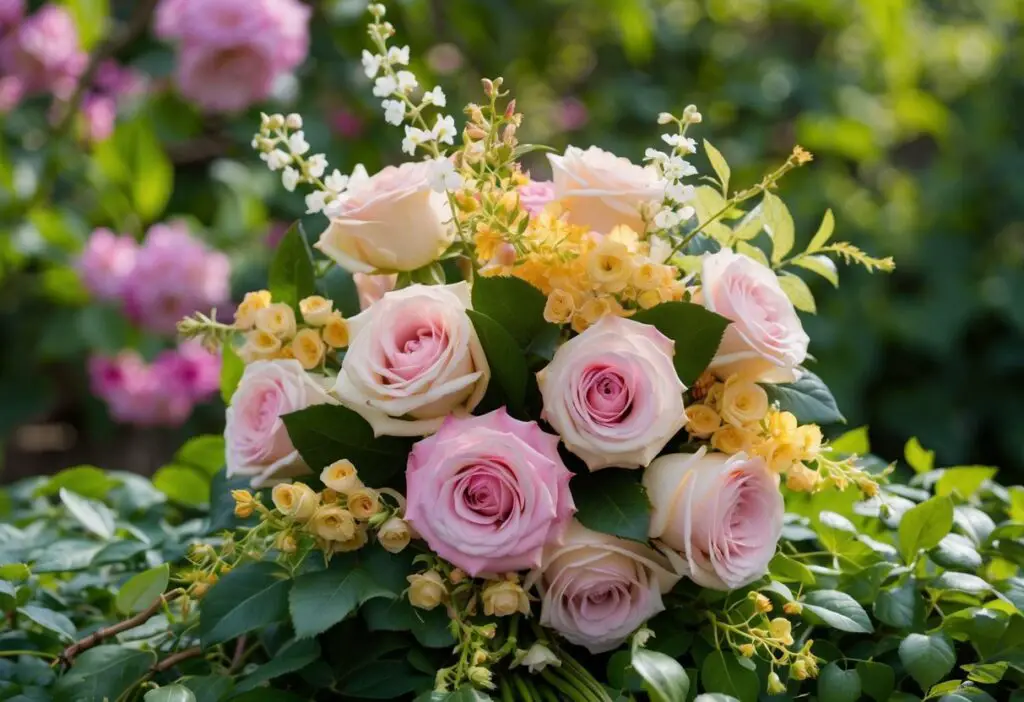
Roses and honeysuckle are the stars of June. These flowers stand out for their rich history and unique roles in nature and culture. Let’s dive into what makes these two fascinating plants special.
Rose Varieties and Characteristics
You might know roses from the garden, but did you know there are over 150 species? These fall under the rose family, Rosaceae. From species roses to modern roses, each type brings its own charm. Old garden roses are your classic choice with a strong scent, while modern roses often offer more vibrant colors.
Roses come in many sizes and colors. Red often symbolizes passion, while white represents purity. Their petals are not just pretty—they also serve to attract pollinators like bees.
Roses can be grown in many climates. They need sunny spots and well-drained soil. Pruning is key to keeping your roses healthy and blooming each year. With a little care, roses can be a real showstopper in your garden.
Honeysuckle Species Overview
Honeysuckle, known scientifically as Lonicera, belongs to the Caprifoliaceae family. There are about 180 species. They are known for their sweet-smelling and tubular flowers, which are often loved by hummingbirds.
These plants can be climbing vines or shrubs. You’ll find them in colors like yellow, pink, and white. Honeysuckle does well in both sunny and partially shaded areas.
This plant is more than just pretty; it can be quite hardy, tolerating a range of soil types. They can enhance your garden’s privacy as they climb up fences or trellises. Just watch out for invasive species which can quickly take over if not managed.
Cultural and Historical Context
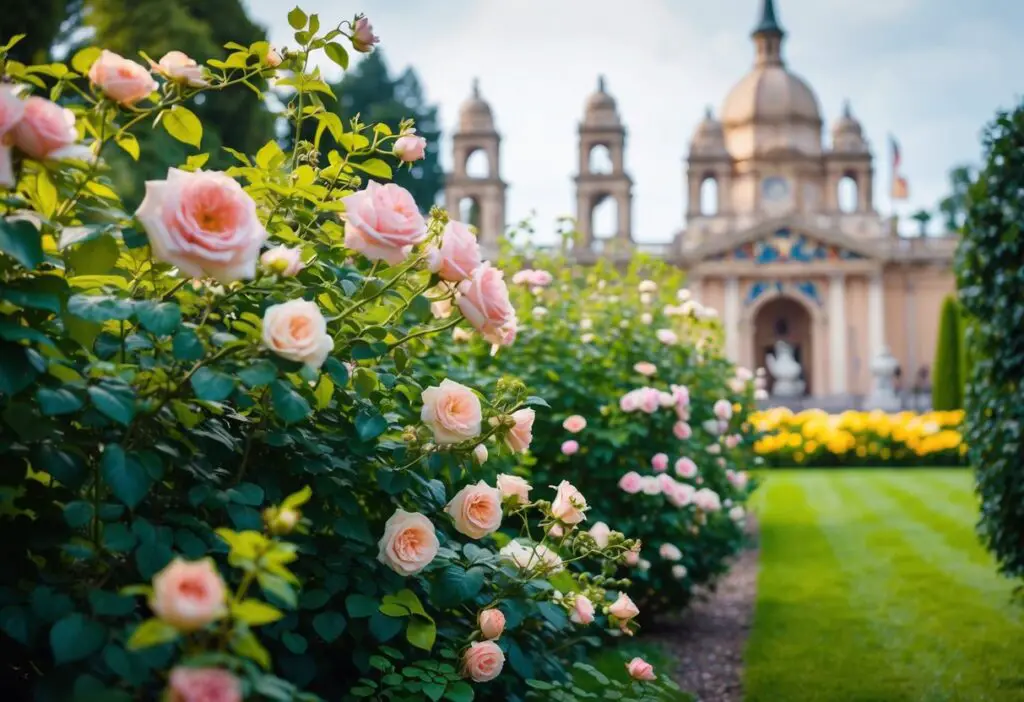
The rose and honeysuckle are June’s birth flowers, each steeped in rich culture and history. Roses are deeply rooted in Greek mythology, symbolizing love and beauty. Meanwhile, in folklore, honeysuckle carries meanings of devotion and affection.
Roses in Greek Mythology
Did you know roses were adored in ancient Greece? They were linked to Aphrodite, the goddess of love. Legend has it that roses sprang from her tears, forming beautiful flowers that express love and passion.
Moreover, roses were not just symbols of love. They also represented beauty, often associated with the gods. That’s why you might see them in many ancient tales.
Today, the rose endures as a global emblem of love, just like in ancient times. Their colors continue to convey various emotions and messages.
Honeysuckle in Folklore
Honeysuckle boasts its own share of fascinating folklore. In many cultures, this plant symbolizes devoted love due to its sweet fragrance and twining nature.
Can you imagine that kissing under a honeysuckle plant was thought to ensure lasting love? This plant wasn’t just about romance, though. It was also believed to ward off evil spirits and protect homes.
Honeysuckle’s meaning varies, but one thing is clear: it remains a powerful symbol of affection and protection in traditional stories. Its charming blooms and lovely scent have left a lasting mark on many hearts.
Color Meanings and Symbolism
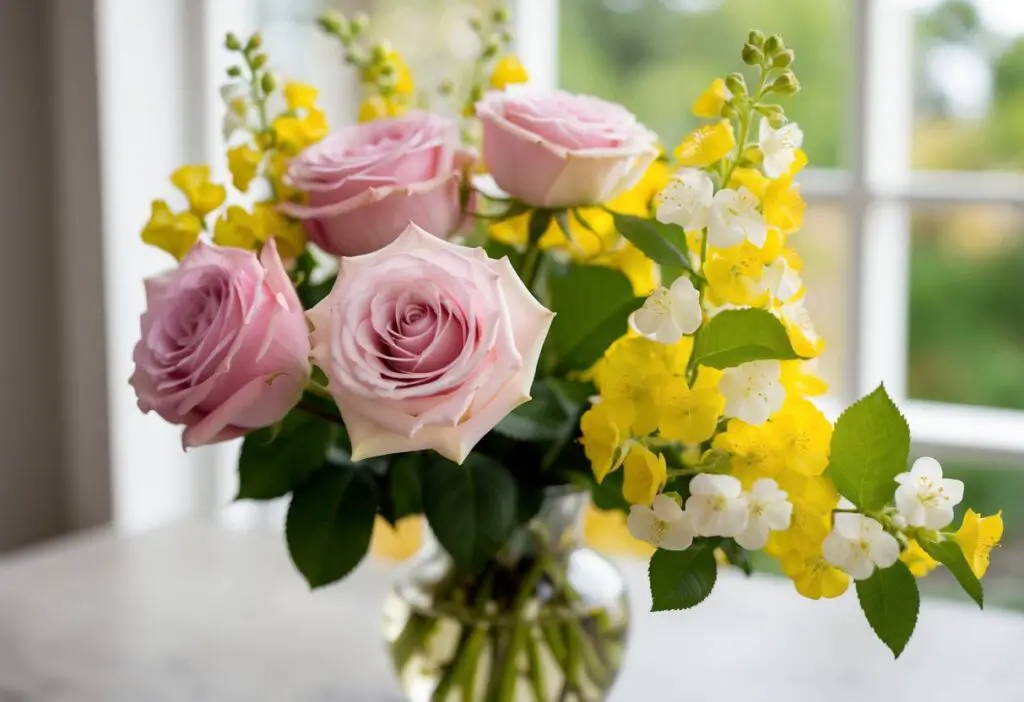
When thinking about June’s birth flowers, roses and honeysuckle happen to symbolize love and positivity. They come in different colors, each carrying its own unique message. Let’s explore how the color of these blooms influences their meaning.
Interpreting Rose Colors
Roses are known for various colors, each with a special meaning.
Red roses stand for love and passion. They’re like the beating heart of romance.
White roses symbolize purity and rebirth. Remember the last wedding you went to? Chances are, you saw plenty of these beauties.
Yellow roses are all about friendship and cheerfulness. They’re like a sunny day wrapped in petals.
Pink roses convey grace and admiration. Have you ever given or received these as a “thank you” gesture?
Orange roses signify enthusiasm and desire. They’re not shy, and neither should you be when giving them!
When deciding on roses, think about the message you want to send. The right color can say more than words ever could!
Honeysuckle Color Significance
Honeysuckle should not be overlooked, as its colors hold their own special meanings.
Though not as varied as roses, honeysuckle blooms primarily come in white and pink.
White honeysuckle is linked with sweetness and happiness, much like the pure joy of a child’s laughter.
Pink honeysuckle suggests affection and bonding, ideal for celebrating a new friendship or long-lasting relationship.
Honeysuckles have a sweet aroma that’s hard to resist. It’s like nature’s own perfume bottle! Whether you’re looking to express joy or affection, these flowers hit the mark.
Caring for Your Birth Flowers
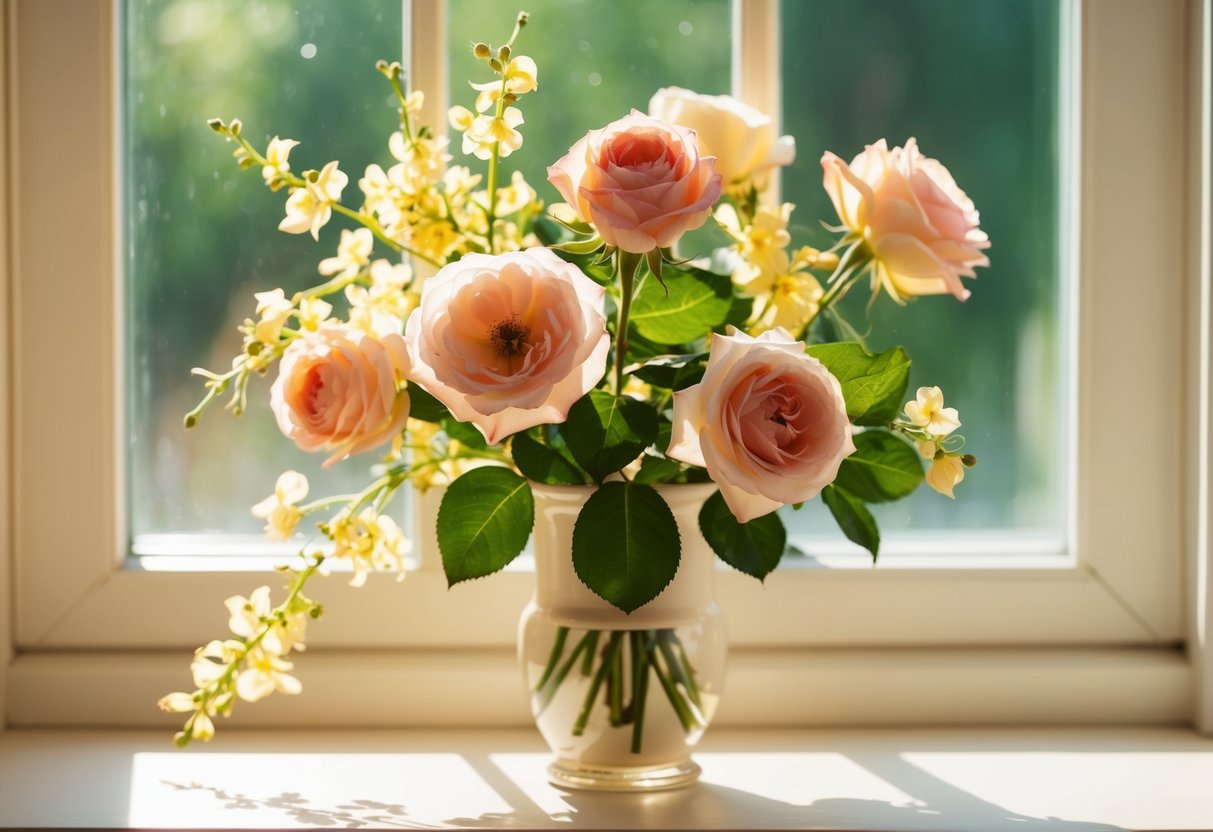
Taking care of your June birth flowers ensures they thrive and bring beauty to your space. For roses, it’s important to know about the different types like floribunda, hybrid tea, and climbing roses. Meanwhile, honeysuckle requires attention to its planting needs and longevity.
Growing Roses: Tips and Tricks
When growing roses, first decide on the type that suits your garden—floribunda, hybrid tea, or climbing. Each variety has its charm! You’ll want to plant them in well-drained soil with lots of sunlight. Roses are sun lovers, needing about six hours of direct sunlight daily.
Don’t ignore the importance of watering. Keep the soil moist but not soggy. A mulch layer can help retain moisture and control weeds. Pruning is essential to encourage beautiful blooms and maintain the plant’s shape. Cut back the stems in early spring for the best results. Fertilize your roses monthly during the growing season to provide essential nutrients.
Honeysuckle Plant Care
Honeysuckle plants are hardy but require some love to thrive. They enjoy full sun but can survive in partial shade. For the best flowers, ensure they’re in a spot with at least four hours of sun daily. Plant honeysuckle in fertile, well-drained soil. Water regularly, especially in dry spells, to keep the soil moist. Be careful not to overwater, as this can lead to root rot.
These plants can become invasive, so regularly prune them to control their growth. Trim the vines after flowering to help shape the plant and promote lush growth. Honeysuckle can live for many years, so with a little maintenance, you can enjoy their sweet blooms for a long time.
Decorative Uses and Arrangements
Roses and honeysuckle can transform any space with their beauty and fragrance. Whether in bouquets, centerpieces, or other decorative settings, these flowers bring elegance and color.
Designing with Roses
Roses are the stars of any floral arrangement! Whether you’re planning a wedding or just want to brighten up a room, roses are your go-to. You can use various colors to express different emotions: red for love, yellow for friendship, and pink for joy.
Use rose petals liberally for that extra touch of glamour. Imagine them scattered on tables or pathways. Different bouquet styles, like clustered or cascading, let you match any occasion or mood. Roses are versatile, fitting into simple bud vases or extravagant displays. Plus, you know what’s great? They last long with the right care. Tip: Snip the stems and keep them in fresh water.
Incorporating Honeysuckle into Floral Decor
Honeysuckle flowers are fantastic for adding a soft and natural feel to arrangements. These fragrant flowers work well as fillers, giving any bouquet a lush, full appearance. Imagine pairing them with wildflowers for a rustic look or with elegant blooms for formal events.
These flowers’ tubular shape and range of colors—white, yellow, pink, and red—add visual interest. Picture them climbing over arches or in hanging baskets, where they can truly shine. Bonus: They attract hummingbirds, adding a lively touch to any gathering. Pro tip: Keep them cool and away from direct sunlight to extend their life.
Unique Gift Ideas Featuring June Birth Flowers
June birth flowers bring a special charm to gift-giving. Roses and honeysuckles both carry unique meanings and can be used to make memorable presents.
Rose-Inspired Presents
Who wouldn’t love a gift that screams elegance and beauty? Roses are perfect for creating a range of thoughtful gifts. You can consider giving rose oil and rose-scented candles, which are popular for their soothing fragrance and positive energy.
Add a personal touch with a handmade rose-themed blanket. These not only provide warmth but also create cherished memories. If you’re looking for something more intimate, a pendant necklace featuring roses can be a sentimental choice.
Doesn’t a bouquet of fresh roses sound lovely for celebrating birthdays or special occasions? They are classic, timeless, and always appreciated. Pair them with a heartfelt card for maximum impact.
Honeysuckle-Themed Gifts
Honeysuckle gifts add a dash of happiness and affection to any occasion. Start with honeysuckle-scented products, like perfumes or lotions, which offer that sweet aroma without being overpowering.
How about a honeysuckle charm? These can be worn as jewelry or used as a keychain, bringing the joy of this lovely flower wherever you go. For those who love gardening, giving a live honeysuckle plant can be an engaging and long-lasting gift.
Consider digital prints of honeysuckle flowers. They make for charming decor, brightening up any space with their vibrant colors. These prints can be framed or used in personalized stationery.
Myths and Fun Facts
The rose and honeysuckle, both June birth flowers, have fascinating stories and trivia. Discover their legends and historical significance, enhancing your understanding and appreciation.
Rose Legends You May Not Know
Roses have enchanted people for centuries. You might have heard that they are a symbol of love, but there’s more to their story. In ancient Greek mythology, roses were linked to Aphrodite, the goddess of love. It was believed a red rose bloomed from her tears and the blood of her lover, Adonis.
In medieval times, roses became a sign of secrecy. People spoke “under the rose” when sharing secrets. This tradition is known as sub rosa. Roses are also national symbols, serving as the national floral emblem of the United States and England.
Moreover, old garden roses and heirloom roses capture the timeless beauty of history. These varieties existed before 1867, the year marking the introduction of the first modern rose. Their charm continues to captivate gardeners and flower lovers alike.
Honeysuckle Lore and Trivia
The honeysuckle, with its sweet aroma, is more than just a pretty plant. You might be surprised to learn that in some folklore, honeysuckle vines growing near a home’s entrance are believed to bring good luck and protection.
These flowers, rich in symbolism, represent devotion and affection. In music history, Honeysuckle Rose by Fats Waller, a jazz standard, highlights its cultural significance. The song, loved by many, was inducted into the Grammy Hall of Fame in 1999.
Honeysuckles are also diverse in color. You can find blossoms in white, yellow, pink, or red. Whether climbing a fence or hanging from a trellis, their blossoms brighten any garden with vibrant hues.
Frequently Asked Questions
When it comes to the June birth flowers, roses and honeysuckle are rich in symbolism and variety. Let’s explore what makes these flowers unique, along with suggestions for celebrating a June birthday with them.
What are the specific meanings behind the rose and honeysuckle as June birth flowers?
Roses symbolize love, beauty, and passion. Different colors of roses convey various emotions; for instance, red signifies love and respect, while white represents purity. Honeysuckle, on the other hand, stands for everlasting happiness and affection. Their hardiness and sweet scent further enhance their charm.
Can you suggest some popular rose varieties for celebrating a June birthday?
Consider giving classic varieties like ‘Peace,’ known for its lovely yellow and pink petals. Another favorite is ‘Mister Lincoln,’ which showcases deep red hues. For those who prefer something unique, ‘Blue Moon’ offers a rare bluish-lavender shade.
How does the symbolism of the honeysuckle differ from that of the rose?
While roses often denote deep, romantic love, honeysuckles express everlasting bonds and sweetness. Honeysuckles symbolize devoted and enduring love, making them a wonderful, symbolic gift during the summer months.
What types of tattoos often incorporate the June birth flowers?
Many people choose tattoos of roses to express love and passion. Honeysuckles are less common but still feature in designs highlighting nostalgia or reminiscence. Artists often pair these flowers with elements like hearts, names, or dates to add personal significance.
What are some notable historical or cultural references to June’s birth flowers?
Roses have appeared in various cultural iconographies, like the Tudor rose in English history. Honeysuckles have long been admired for their fragrance and beauty and are often featured in poetry and art. They symbolize the joys and struggles of love.
Are there any traditions or superstitions associated with roses and honeysuckles in the month of June?
In folklore, roses are thought to bring love and ward off evil spirits when used in bouquets or decorations. Meanwhile, honeysuckles, with their climbing nature, are said to bring luck when they grow near a home, symbolizing bonds that are hard to break.
